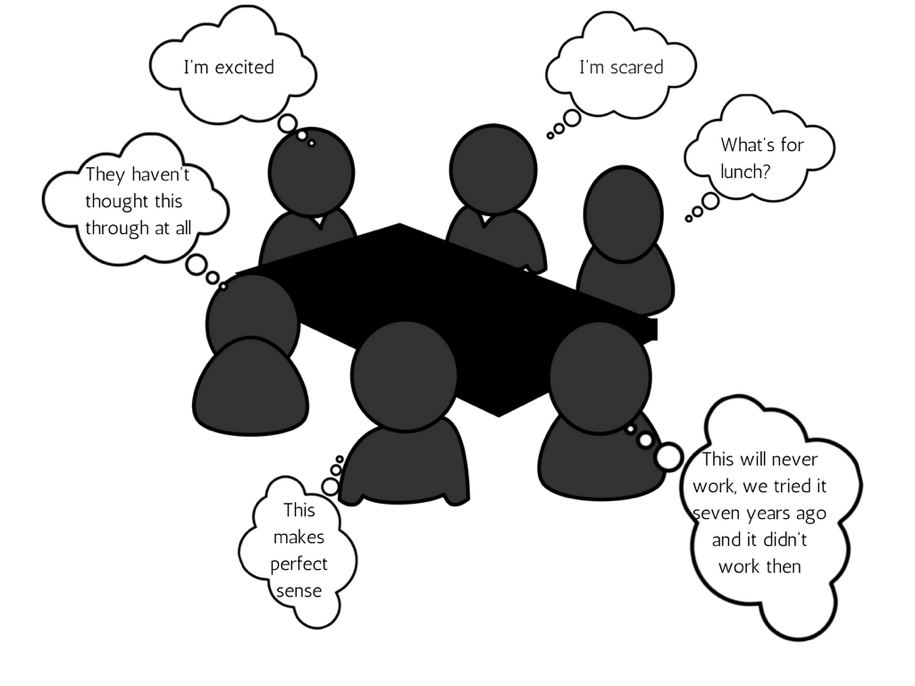In my previous article about creating change-ready teams, I wrote about the understanding of the state of mind that is the key to preparing your people for change. If you haven’t read that one yet, you might like to go and read it first – it lays the foundation for the rest of this series.
Now let’s dive into the subject of resistance to change – a catch-all label for any attitude or behaviour that is seen as holding the progress of the change back rather than moving it forward or ‘bedding it in’.
The traditional change management approach tends to focus on a few different strategies to engage people and bring them along on the change journey. We commonly see recommendations to implement the following strategies:
- Make sure people see the need for change (create a burning platform – show them the pain of keeping the status quo)
- Set a direction and communicate clearly and consistently
- Give them the information they need to understand the practical impacts of the change and to make any decisions they need to make
- Give them the tools and training required to do their job in the new environment
But what about when you’ve done all that and some people are (inevitably) still not engaged, and worse, are potentially ‘poisoning the well’ for others?

When this happens, recommendations usually go along the lines of: get alongside them, understand and alleviate their fears, and turn them (somehow) into a champion of the change.
While these intentions are good, there’s a somewhat inconvenient limit to our magical powers as change agents:
We cannot change someone’s mind.
We can’t make them see the change as a good thing, when to them, it doesn’t seem that way.
We can’t make them look at things from the company’s perspective, when their mind is clouded with fearful thinking about their own future.
We can’t ‘alleviate their fears’ because their fears are coming from inside them, not from the change.

Have you ever given someone all your rational arguments for why a change is a good thing, or why their fears are unfounded, and wondered why they still can’t see what you see? Yes, me too. It’s because we’re addressing the symptom, not the cause. While it might look like ‘resistant behaviour’ is telling you that you haven’t communicated enough, or clearly enough, or created enough of a burning platform, or given people the right tools, it’s not.
I’m not saying you don’t need to communicate more or give people different tools – you may well need to do those things; I’m just saying that that’s not what resistance is telling you.
Resistant behaviours are simply telling you that your people have fearful thinking about the change, and that they (mistakenly) believe it’s the change that’s making them feel that way.
So, what do I do with that?
This is great news! When we know what ‘resistance’ is really telling us, we can aim our intervention at the cause rather than the symptoms. Once we’ve truly understood that people are simply reacting to their upset or fearful thinking, and not to the change itself, we can stop focusing on the change as a cause. We can instead help them to see their feelings for what they are – the reflection of their ideas (thoughts) about the value of the change and their thoughts about an unknown future, that they believe represent reality.
Please note that I’m not saying these people aren’t facing practical consequences from the change – some may be losing their jobs and some may be losing treasured team-mates. There may be financial implications that they need to address. This is not about devaluing their feelings of grief or loss or telling them their fears don’t matter; it’s simply about pointing to the fact that the emotions they think are caused by their situation, are always and only coming from Thought in any moment – regardless of what’s happening on the outside.
For a real-time illustration of this, we can point people to exceptions. (I’m not suggesting you dive in and ask these questions cold – these would be part of a wider coaching conversation).
- If the change had the power to cause particular feelings, wouldn’t everyone feel those feelings?
- If it were the change causing your feelings, wouldn’t you feel the same all the time if the situation hadn’t changed?
- Notice how you can feel differently from one day or one minute to the next even when the situation remains the same – how is that possible if the situation is the cause of your emotional state?
- How would you feel about this if you were thinking something different?

These differences are only possible because 100% of our felt experience is being created through our thoughts, and here’s a crucial point: our thoughts can, and will, change from one moment to the next, without us doing or changing anything.
Have you ever tried to hold onto a thought? They’re slippery!
I invite you, as a change agent, to really reflect on those exception questions the next time you’re feeling very attached to an opinion or some righteous indignation. Replace the word ‘change’ with whatever you think it is that’s causing your feelings in that moment.
You may get a real-time realisation of what it can do for a person, to see how thought is playing out in their experience of life. You may also find yourself becoming a more compassionate change leader when you see that your ‘resistant’ person’s thinking seems just as real to them, as yours does to you.
If you really want to help someone get unstuck, to give them relief from their mental suffering and to help them and your project move forward, understanding how our psychological experience is created 100% through thought can be the key that unlocks everything.
In Part 2.2 we’ll take this further and explore the implications for resistance and engagement when people realise the truth of where their experience of any change is coming from.
This article is brought to you exclusively by The Business Transformation Network.


